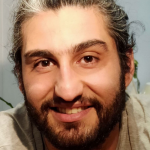For people living with MS who are ambulant (can walk), walking is an important form of exercise for health and wellness. Although most people are aware of this, finding the time and motivation to exercise can be a constant battle in busy lives. Finding ways for clinicians to easily monitor walking patterns and detect changes for individuals in the clinic can also be challenging. This innovative research hopes to assist people living with MS in both areas.
Dr Marzena Pedrini and her team are introducing a new walking-to-music rehabilitation tool called “GotRhythm”, which uses sensor insoles in shoes and links walking activity with music to improve motivation when exercising. The tool can also measure walking patterns, such as the number of steps taken per minute.
The first goal of this study is to compare the GotRhythm walking measurement tool to other established measures of walking. The second goal is to compare walking patterns when listening to motivational music using GotRhythm, against walking patterns when not using the GotRhythm system. The study will also examine levels of fatigue and motivation towards walking using the system.
Ultimately, it is hoped that GotRhythm may be further developed into a rehabilitation tool to improve both walking patterns and exercise motivation. This could lead to the development of a program to improve health and wellness and to provide increased enjoyment of exercise specifically for people living with MS.
During this project, Dr Pedrini and her team discovered the sensor insoles used in the original study design were problematic. To overcome this, they developed a user-friendly mobile phone application that did not need the insoles, called Tempony. Tempony directly measures walking patterns using the phone’s accelerometer and includes features of the original app, GotRhythm, but with improved usability.
Preliminary data collection from participants who used the Tempony application is now complete. There were no clear differences in motivation or fatigue between walking with music and walking without music after 12 minutes.
Dr Pedrini and her team started an additional phase of the study focused on supervised walking to music. They obtained ethics approval, finalised the exercise education material and recruited nine participants for the intervention group, with seven of them completing the entire study.
Dr Pedrini and her team also conducted a scoping review of literature on the design, acceptability, and measured outcomes of music interventions for walking in people with MS. This review found that interest in music interventions has increased in MS research and there is a need to expand the assessment of music or metronome-based interventions as possible treatments for mobility and cognition in MS.
Dr Pedrini presently has a manuscript under review with a peer-reviewed journal.
Updated 31 March 2025
$24,950
2021
3 years
Current project




